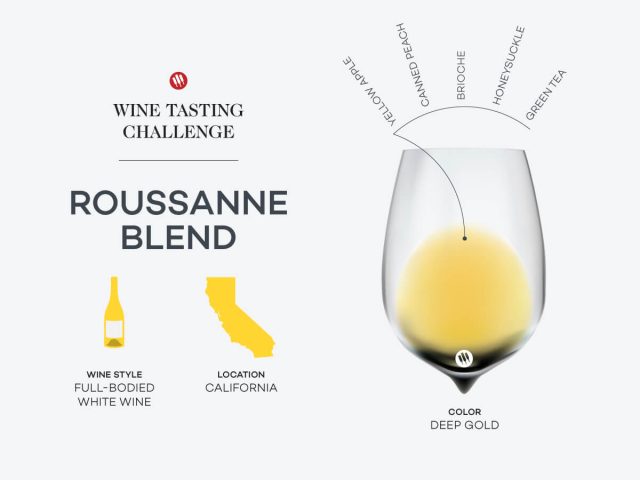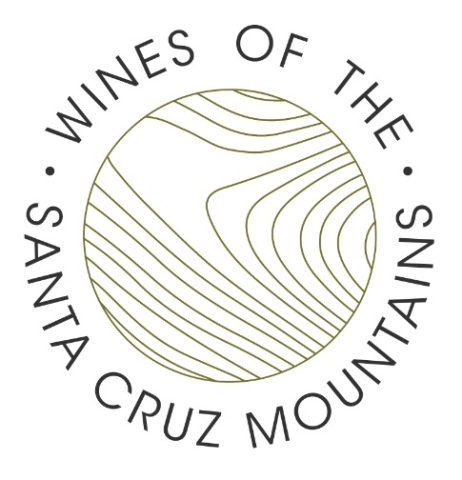A Deep Look at Pignolo : Vinography
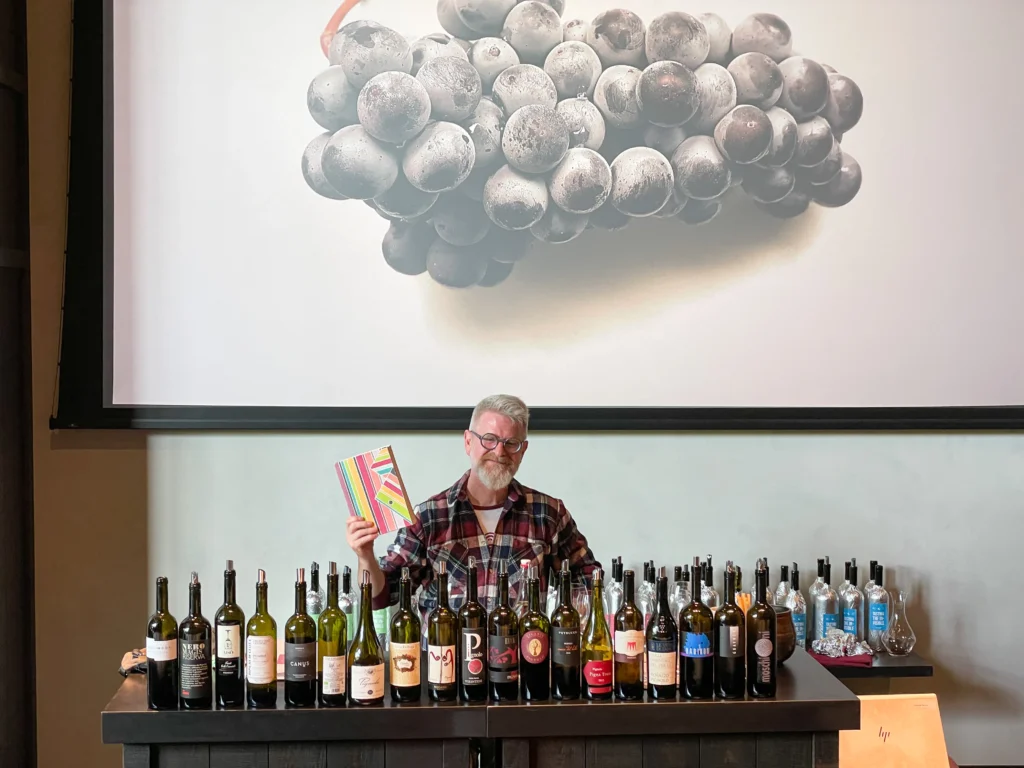
What virtues are there to be found in obscurity? Don’t ask a hipster. They’ll just roll their eyes and go back to listening to music you’ve never heard of. But move beyond the stereotypes of aloof pretension and you can find something of value in the pursuit of the esoteric or the cryptic.
In a world where we swim in an oversaturated sea of media messages, beset by endless waves of rolling viral trends, the pursuit of the obscure is less about defiance than it is a quest for authenticity and depth. We can seek solace in the unknown, and in its intimate embrace, discover things both about the world and about ourselves that would never reveal themselves amidst the noisy ocean of common culture.
I can’t say that such thoughts immediately sprung to mind last year when I was invited to what was almost certainly America’s first and largest tasting of one of the world’s most obscure grape varieties. But more than anything, I am a curious wine drinker. So when someone invites me to come along and taste a few dozen examples of a grape I’ve had maybe once or twice in my life, I usually jump at the chance.
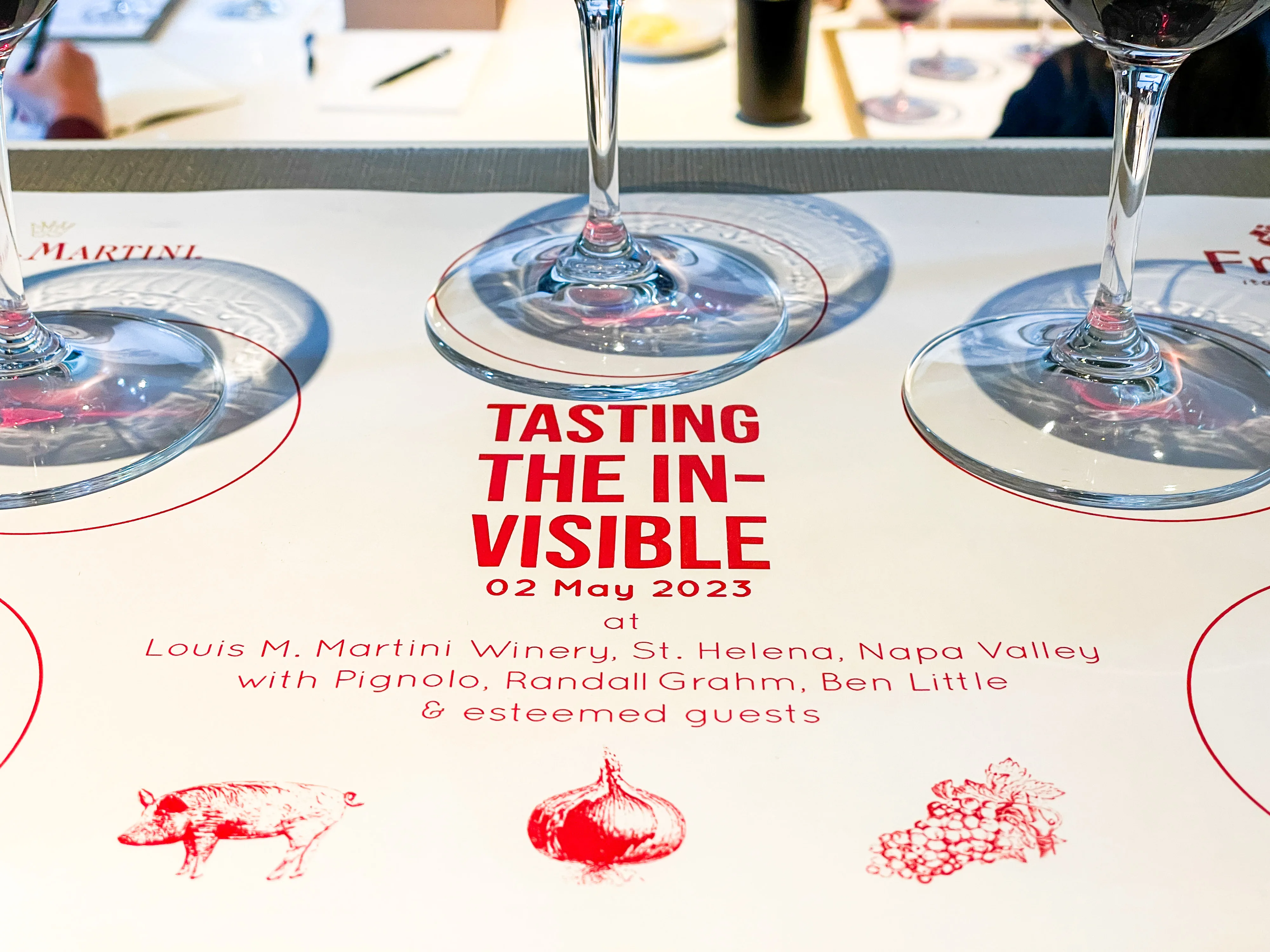
In all honesty, I had little sense of what I was getting myself into, but I trusted my friend Randall Grahm, from whom the invite came, to not leadeth me unto false pathways.
Tasting the Love
What ensued was at once both a straightforward wine tasting, and on the other hand, something akin to a spiritual retreat led by a man in the grips of a grape-induced satori.
I suppose it is utterly fitting, and in keeping with the theme of obscurity, that I don’t think I had ever heard of Ben Little before I showed up in Napa on a blustery spring day. Bright eyed, energetic, and sporting the requisite amount of facial hair to get into any hipster photo shoot, Little began the tasting with something approaching an incantation.
“In situations like this where I’m talking about Pignolo, I tend to let Pignolo be the one to speak,” said Little. “It is my leader, my guide. I woke up at 2:30 this morning and a quote came to mind, and it was this: ‘Tell me what you are going to do with your one wild and precious life.’ Those are the words of Mary Oliver from a poem she wrote called the Summer Day in 1990. I found the connection. This one wild and precious life.”
“In all the databases of grapes Pignolo is recognized as having its origins as vitis sylvestris. It comes from a wild vine. That is something that, over centuries, cultivators, farmers and in more recent years viticulturists have tried to come to terms with. But it has proven difficult.”
“Today may be difficult. You are under no obligation. There is no expectation. One thing Pignolo has taight me in recent years is to try to live every day without expectation. So when you meet Pignolo today, try to leave that human element of yourself to one side and taste with all your being. Your presence here today is all Pignolo and I could have ever asked for.”
“Neither Pignolo or I see this as a master class. This is a small yet significant part of a unique lesson. If it is philosophers who teach us know to think, I dare say that like all great artists, Pignolo and its winemakers are teaching us how to love. Today is a lesson in thought. For the last 260 years, with ever increasing measure, we have grown to ignore nature’s integrated evolutionary way, choosing instead to follow a more detached developmental path.”
“For reasons of simplicity, I see human decision making govered by a duo of stimuli. One is money, the other is love. In the last 45 years, a hardy bunch of Fruilani viticulturalists and winemakers have endeaoured to unlock the myth that lives aroudn this small black grape. Commercial wisdom declares no one of sound financial mind would ever choose to work with Pignolo on the basis of money. Which clearly leaves only one option. They do what they do for love. Instinct has led them thus far. For those that continue to face the battering challenges in the vineyard, empathy is being forged, and their creative flow is being channeled.”
“Today we’ll be tasting the invisible fruits of Pignolo love’s infinite endeavor. As we embark on this adventure together, remember this. With sameness we risk getting lost in the blur. With difference we risk being outstanding.”
And with that, we tasted.
A Singular Obsession
That excerpt from Little’s opening exhortation will give you a sense of the billowing fever dream that is Pignolo: Cultivating the Invisible, his first book that is one part love letter, one part treatise on the history of winemaking, one part socio-political history of Italy, one part anthropological investigation, and 100% obsession with a grape that most people have never heard of, let alone tasted.
Think W.G. Sebald meets Andrew Jefford and you’ll get something of a picture.
Clocking in at 430 pages, with the first 267 dedicated to exploring every possible facet of the Pignolo grape, the book is overwhelming in its depth and detail. I’ve perused many a book on an individual grape, from Stuart Pigott’s ode to Riesling, to John Winthrop Haeger’s analysis of Pinot Noir in America, but I’ve never seen a book so thoroughly and deeply consider a single grape variety and every possible tangent related to its existence.
It’s worth noting that the book itself is something of a work of art. Little has made ample use of his background in design, resulting in a stunning overall package with high quality paper, sewn binding, and unique dust jacket.
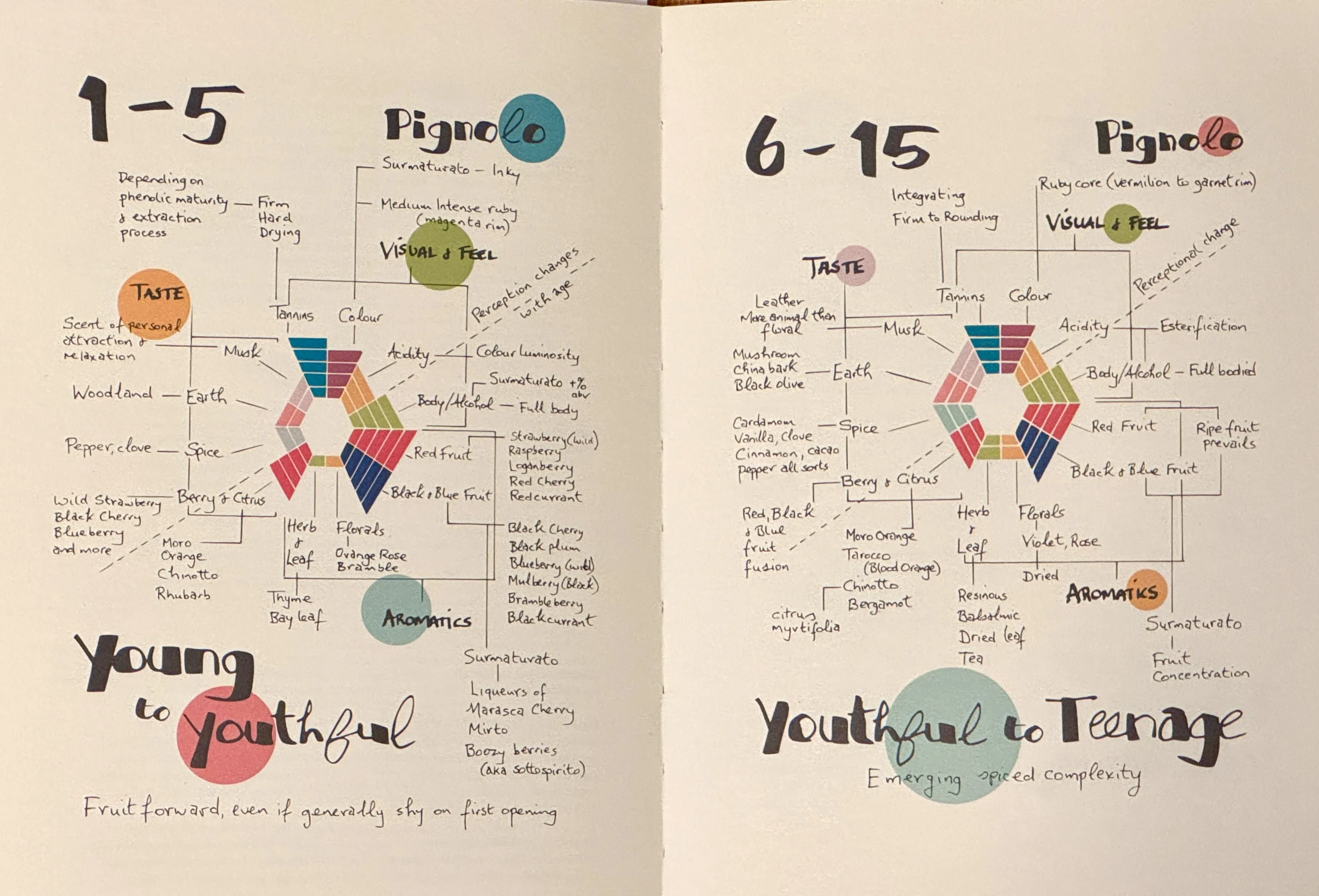
Inside, the book is equally considered, with extremely well-thought-out typography and gorgeous color palette, not to mention being stuffed full of visuals that range from the whimsically decorative to intriguingly informative.
Frankly this is the type of no-expense-spared, blissfully self-indulgent work that I would expect someone to create after a long career, not as their first published work. Little has set an extremely high bar for himself, if he has more books coming in his career. If he doesn’t, however, that would be understandable. There’s enough material here to work with for a long time.
The Grape That Almost Wasn’t
According to Little, the first written mention of wine made from Pignolo dates to January 1, 1300, on a scrap of parchment detailing the sale of one conzo (79.3 liters) of Pignolo for 45 soldi in the municipality of Cividale in northeastern Italy.
Other written references follow in 1333 and 1340. By comparison, the first written reference to Cabernet Sauvignon dates to the 1700s. Pinot Noir’s earliest written records are said to date to 1375.
Little traces the mentions of Pignolo through history, but also through geography, firmly establishing that as far back as the 14th Century, it has been associated with not just the farthest northeastern corner of Italy that we today call Friuli-Venezia Giulia, but even with the specific sub-regions of Friuli where it is now grown and vinified, making a clear case for its autochthonous status in the area.
To cut a (very) long saga exceedingly short, in the wake of phylloxera in the late 1800s, two World Wars, the dissolution of the Austro-Hungarian empire, the formation of modern Italy, and the rise of Merlot and (Tocai) Friulano, by 1970 Pignolo had dwindled to single-digit acreage.
Adding insult to injury, in 1970 Italy was in the process of formalizing the list of grapes authorized for planting in Friuli’s four provinces in preparation for a new European Economic Community directive. When enacted, EEC Regulation #2005/70 did not mention Pignolo as an authorized variety, effectively making it illegal to plant and illegal to bottle under that name in Friuli.
Thanks to a grassroots campaign to plant the grape in full defiance of the law, not by a winemaker even, but by a grappa distiller seeking to preserve the viticultural patrimony of Friuli, Pignolo and a number of other native varieties, including Schioppettino were eventually brought back into the fold in 1978. In 1983, after 5 years of advocacy by a few local players, Pignolo was upgraded from merely “authorized” to “recommended,” and in 1995 Pignolo was admitted to the Colli Orientali del Friuli DOC discipline.
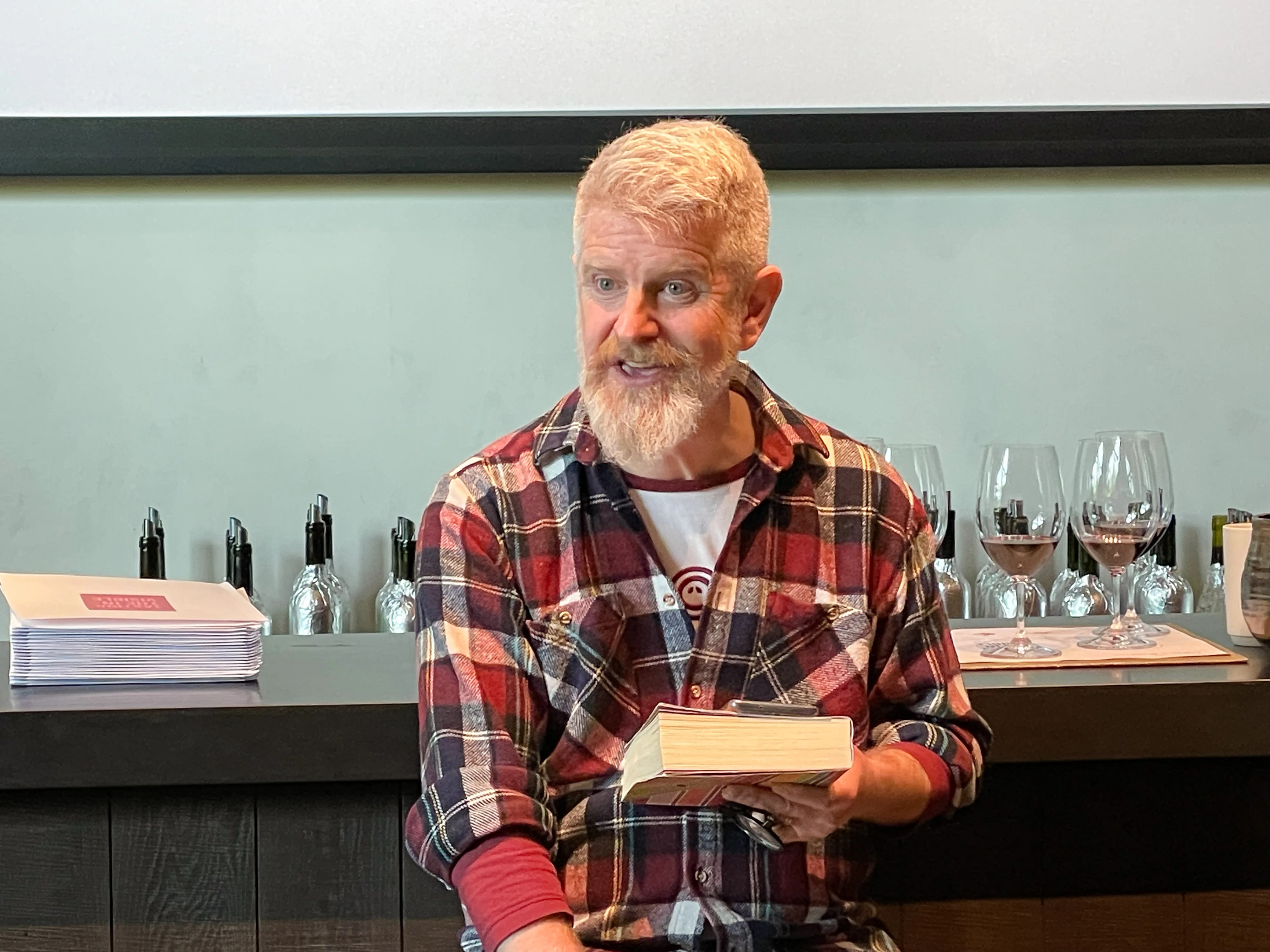
In 2016, when Little began his deep dive into this curious little grape, there were, according to some estimates, less than 50 acres of it planted. When asked, any given producer of Pignolo would tell Little that they were aware of only 15 or 20 others making this rare grape. At the end of his investigations, Little had discovered approximately 33 bottlings of Pignolo in existence. So he gathered them up and on September 12, 13, and 14th of 2016, he invited a panel of sommeliers, wine writers, wine association leaders, and winemakers to come taste them.
By all accounts, the tasting blew people’s minds—shining a light on a local treasure that that had escaped the notice of almost everyone.
In the year or two following that event, the number of “known” Pignolo bottlings had grown to 55, and Little realized that he had tapped into an underground renaissance of one of the world’s rarest grapes. It was a local phenomenon, a symbiotic collaboration between people and a grape swimming together against the tide of modernity.
It was a story too delicious for Little to pass up.

Tasting Notes
The following wines were tasted blind. Notes have only been edited for grammar, flow, and clarity.
2017 Borgo San Daniele “Arbis Ròs” Pignolo, Friuli Isonzo, Friuli-Venezia Giulia, Italy
Medium to dark garnet in the glass, this wine smells of earth and dried flowers, aromatic herbs like pennyroyal, and a hint of animal foxiness. It is very perfumed. In the mouth, expansive flavors of cherry, berries (huckleberry), and dried herbs mix with a stony earthy quality. There’s a hint of piney wax flower in the finish. Faint, grippy tannins. Excellent acidity. Score: around 9. Cost: $50. click to buy.
2016 Nero Magis Riserva “Riserva” Pignolo, Friuli Colli Orientali, Friuli-Venezia Giulia, Italy
Medium garnet in the glass, this wine smells of subdued earthy notes and some red fruit. In the mouth, muscular tannins wrap around a core of berry and plum, with a hint of bitterness that comes across partly woody, partly herbal. Sandpapery tannins. Good acidity. Ultimately this wine is a bit woody, with overt signatures of oak that linger in the finish. Score: between 8 and 8.5. Cost: $75. click to buy.
2015 Annalisa Zorzettig “Myò” Pignolo, Friuli Colli Orientali, Friuli-Venezia Giulia, Italy
Dark garnet in the glass, this wine smells of cherry and dark plum with hints of dried flowers. In the mouth, fairly rustic tannins wrap around a core of citrus peel, plum and plum skin, earth, and dried herbs. Excellent acidity keeps the wine fresh and juicy, with hints of dried herbs, dried wood, and dust in the finish. Wonderful freshness, even a hint of mintiness. Muscular. There’s a wonderful depth of fruit here. Score: between 8.5 and 9. Cost: $??
2015 Ronchi di Cialla Pignolo, Friuli Colli Orientali, Friuli-Venezia Giulia, Italy
Medium to dark ruby in the glass with clearly visible chunks of sediment, this wine smells of earth and dried cherries, flowers, and aromatic herbs. Thick muscular tannins wrap around a core of plum, earth, and berry, mixed with green herbs. The tannins squeeze the palate, but the fruit is quite fresh and pleasant. Excellent acidity. An older wine, I think. But tastes quite fresh. Dusty tannins. Minty notes in the finish. Score: between 8.5 and 9. Cost: $39. click to buy.
2015 Canus Pignolo, Friuli Colli Orientali, Friuli-Venezia Giulia, Italy
Medium ruby with garnet highlights and a faint aromatic haze, the wine smells of dried flowers, cocoa powder, herbs, and citrus oil. In the mouth, intense tannins mix with plum and berry, dried herbs, and earth. There’s a brambly quality to this wine that is quite compelling. Excellent acidity, and great freshness. Score: between 8.5 and 9. Cost: $70. click to buy.
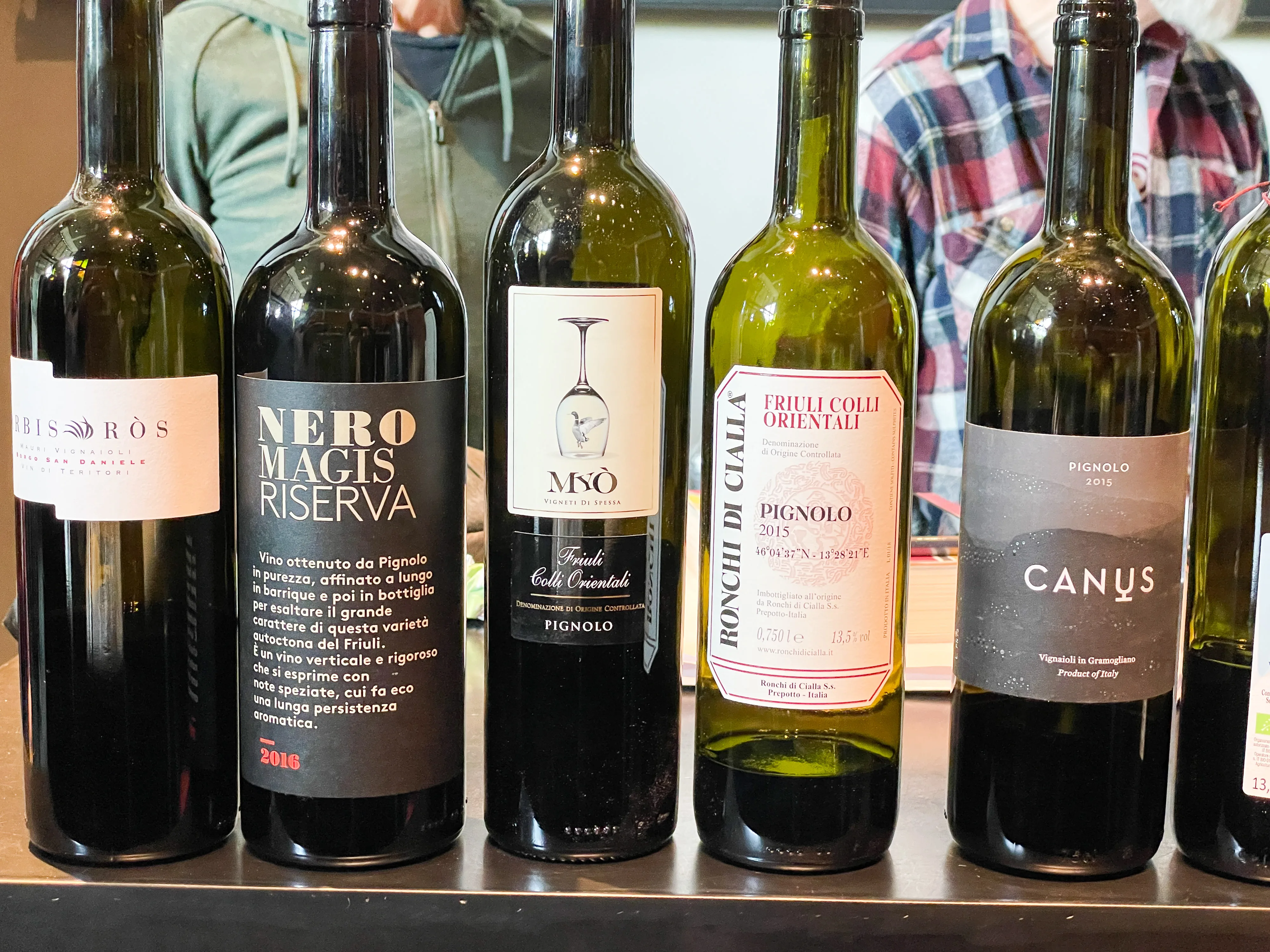
2014 Visintini “Anfora” Pignolo, Friuli Colli Orientali, Friuli-Venezia Giulia, Italy
Medium ruby with hints of garnet and a fine haze of sediment, this wine smells of incense and herbs, dried flowers, and a hint of red fruit. In the mouth, softly textured, fine-grained tannins caress a core of bright plum and plum skin, with juicy red currant notes that linger with hints of herbs and orange peel in the finish. Elegant, poised, and beautifully balanced. This is an older wine but I can’t for the life of me determine how old. It might be 6-8 years old, it might be 20. Score: between 9 and 9.5. Cost: $50.
2013 Specogna Vignaioli Pignolo, Friuli Colli Orientali, Friuli-Venezia Giulia, Italy
Medium to dark garnet in the glass, this wine smells of oak, licorice, mocha, and red fruit. In the mouth, the wine is polished and bright, with restrained tannins. There’s a modernity to this wine, with a more classically new-world styling. Hints of cocoa, cedar, and dried herbs linger in the finish with a touch of citrus peel. Score: around 8.5. Cost: $60.
2013 Livio Felluga “Eremita” Pignolo, Friuli Colli Orientali, Friuli-Venezia Giulia, Italy
Medium garnet in the glass, this wine has a shy nose that smells of restrained plum fruit and sour cherry. In the mouth, fine-grained tannins are grippy but not overwhelming and the acidity is intense, making for a sour cherry, mouthwatering expression that is quite delicious. On the sourish side, with red fruit lingering for minutes. Score: between 8.5 and 9. Cost: $175.
2013 Paolo Rodaro Pignolo, Friuli Colli Orientali, Friuli-Venezia Giulia, Italy
Medium to dark ruby in the glass with a faint haze, this wine smells of raisins and prunes. In the mouth, powdery, fine-grained tannins are dusty and stiffen to become quite muscular as the wine moves across the palate. The fruit here is a little more tired — dried cherry, prune, and some camphor and licorice root lingering with a bitterness in the finish that turns earthy at the last. Score: between 8 and 8.5. Cost: $??
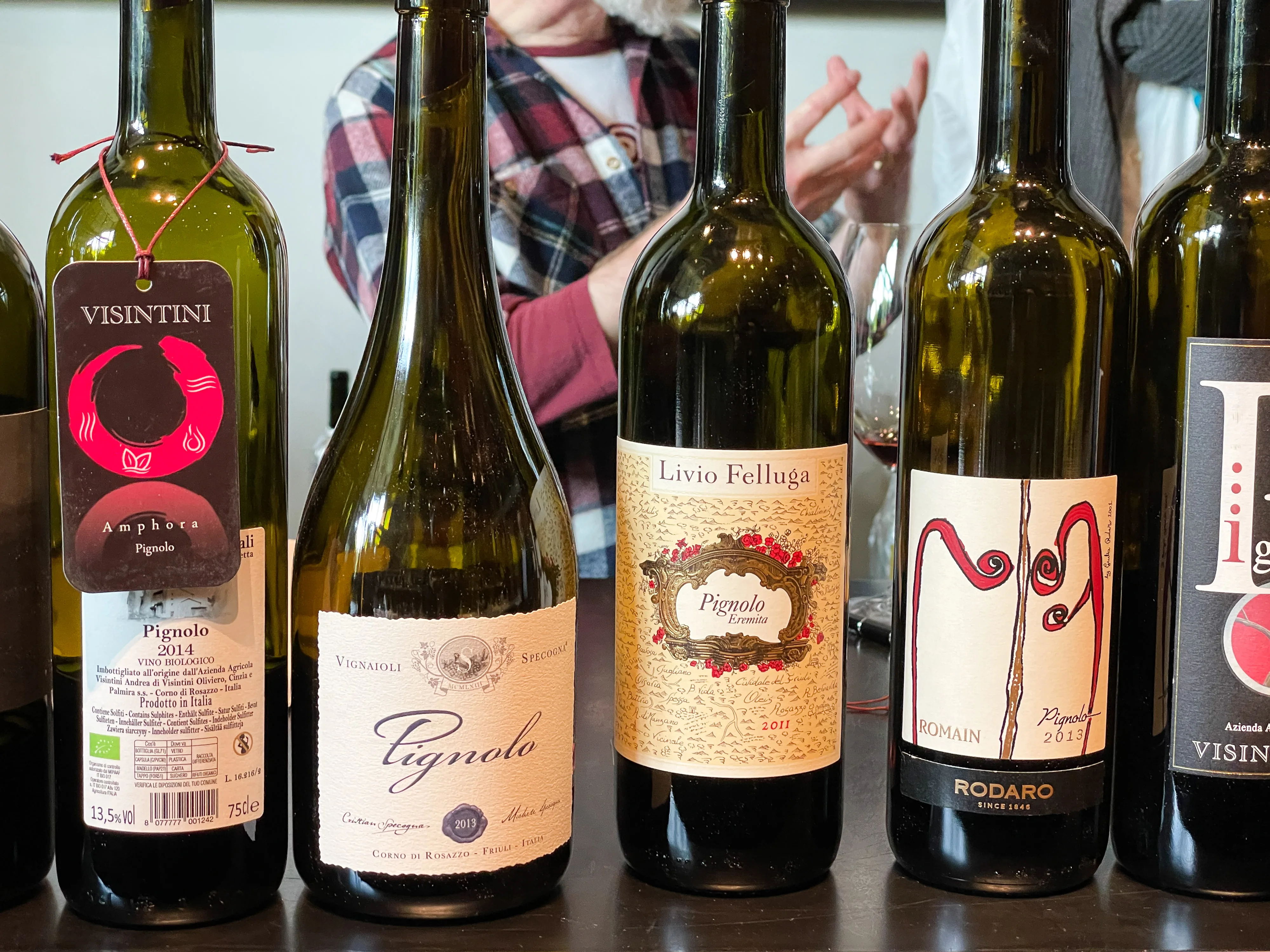
2012 Visintini Pignolo, Friuli Colli Orientali, Friuli-Venezia Giulia, Italy
Dark ruby in the glass with chunky sediment, this wine smells of mushrooms and earth, dried flowers, and dried herbs. In the mouth, dark plum and dried cherry flavors have an earthy mysteriousness to them, wrapped in a fleecy blanket of tannins with excellent acidity and length. Seamless and pretty, with brightness. Score: around 9. Cost: $50.
2012 Ermacora Pignolo, Friuli Colli Orientali, Friuli-Venezia Giulia, Italy
Dark ruby in the glass, this wine smells of dried aromatic herbs, leather, lavender, and thyme. In the mouth, bright dried cherry and sour cherry flavors are wrapped in dusty, supple tannins, with plum flavors emerging over time. A touch of cocoa, cedar, and forest floor. Dust, earth, and hints of dried evergreen linger in the finish. Excellent acidity. Score: between 8.5 and 9. Cost: $55.
2012 Adriano Gigante “Riserva” Pignolo, Friuli Colli Orientali, Friuli-Venezia Giulia, Italy
Medium to dark ruby in the glass, this wine smells of oak and plum, plus dried herbs of both the aromatic and culinary varieties. In the mouth, fleecy tannins wrap around a core of dried cherry, plum, and plum skin. Earth and minty herbs linger in the finish. Score: around 8.5. Cost: $??
2012 Petrucco “Ronco del Balbo” Pignolo, Friuli Colli Orientali, Friuli-Venezia Giulia, Italy
Dark ruby in the glass, this wine smells of dried flowers, plum and plum skin. In the mouth, there’s a hint of horsiness, but that is quickly replaced with plum and dark fruit, earth, leather, and dried herbs. Mintiness keeps the wine fresh. Intense, aromatic, with deep intensity. Bitterness in the finish. Reminds me of an alpine Nebbiolo. Score: around 8.5. Cost: $35. click to buy.
2012 Jermann “Pigna Truss” Pignolo, Friuli-Venezia Giulia, Italy
Dark ruby in the glass, this wine smells gamey and sweaty, with a hint of volatile acidity. In the mouth, faintly bitter notes of plum and plum skin, sour cherry, and carob mix with earth as very muscular tannins wrap around the palate and put a serious squeeze on. Great acidity. Incredibly muscular. A bit much. Score: between 8 and 8.5. Cost: $95. click to buy.
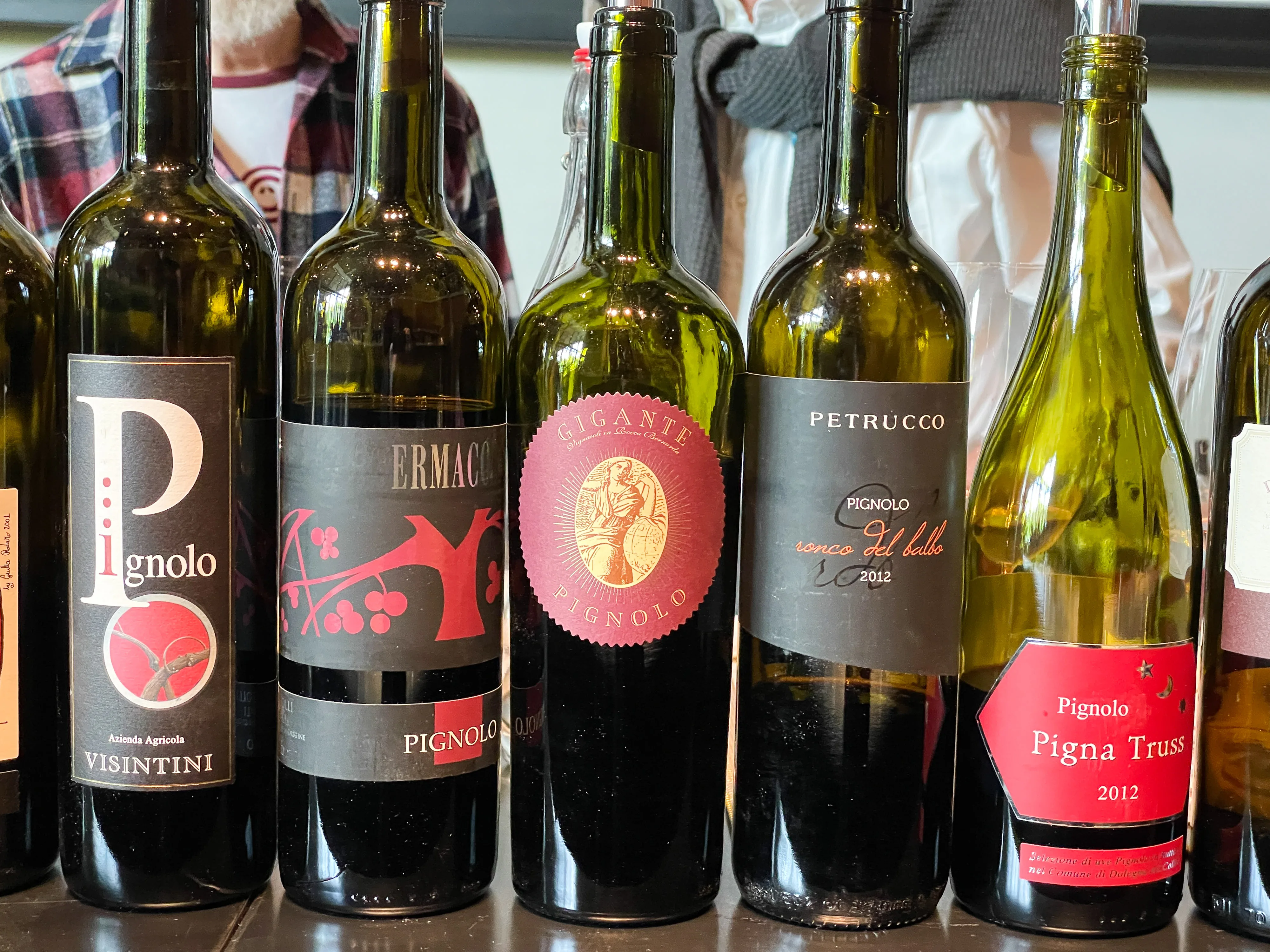
2009 Conte d’Attimis Maniago Pignolo, Friuli Colli Orientali, Friuli-Venezia Giulia, Italy
Dark ruby in the glass, this wine smells of lavender, dried flowers, and forest floor but oak also emerges with strength. In the mouth, oak and lavender mix with plum and bright juicy acidity. Leathery tannins coat the mouth and wrap around the fruit as notes of cocoa, licorice, and mocha-oak linger with citrusy acidity in the finish. Score: around 8.5. Cost: $50. click to buy.
2009 Le Vigne di Zamò “Pignolo di Rosazzo” Pignolo, Friuli Colli Orientali, Friuli-Venezia Giulia, Italy
Dark ruby in the glass with a heavy sludge of sediment, this wine smells of prunes, forest floor, and wet earth. Subtler flavors of plum, plum skin, earth, and citrus peel are wrapped by mellow, fine-grained tannins. This wine is losing some fruit at this point in its evolution. Would have liked to taste it 5 or 7 years ago. Score: between 8 and 8.5. Cost: $70. click to buy.
2009 Radikon “Pignoli” Pignolo, Rosso delle Venezie, Friuli-Venezia Giulia, Italy
Medium ruby with bricking at the rim and a thick sludge of sediments, this wine smells of pine duff, volatile acidity, and red apple skin. In the mouth, bright juicy red apple skin, plum skin, some VA, and leather mix with orange peel and forest floor. Tasty, but angular, and lean thanks to the VA. But there’s no denying the brightness of the wine and a lovely earthy note that lingers in the finish. Score: around 8.5. Cost: $83. click to buy.
2008 Gravner “Rosso Breg” Pignolo, Friuli-Venezia Giulia, Italy
Dark ruby in the glass, with hints of brick and coffee at the rim, this wine has a shy nose of herbs and wet earth. In the mouth, earth, mud, and leather, all wrapped in thick tannins feel like eating a chunk of the garden. Thick and rich. There’s a meaty umami character to this wine as well. Overall: muddy. Score: around 8. Cost: $283. click to buy.
2006 Moschioni “Riserva” Pignolo, Friuli Colli Orientali, Friuli-Venezia Giulia, Italy
Dark ruby with fine sediment and orange at the rim, this wine smells of leather and orange peel, mulling spices / potpourri, and a touch of VA. In the mouth, sweet cocoa powder, leather, earth, dried herbs, and pine duff, have a fantastic minty intensity with a long bright acidity. Muscular tannins coat the mouth, but there’s still this wonderful mouthwatering juiciness to the wine. Beautiful. Score: around 9. Cost: $55. click to buy.
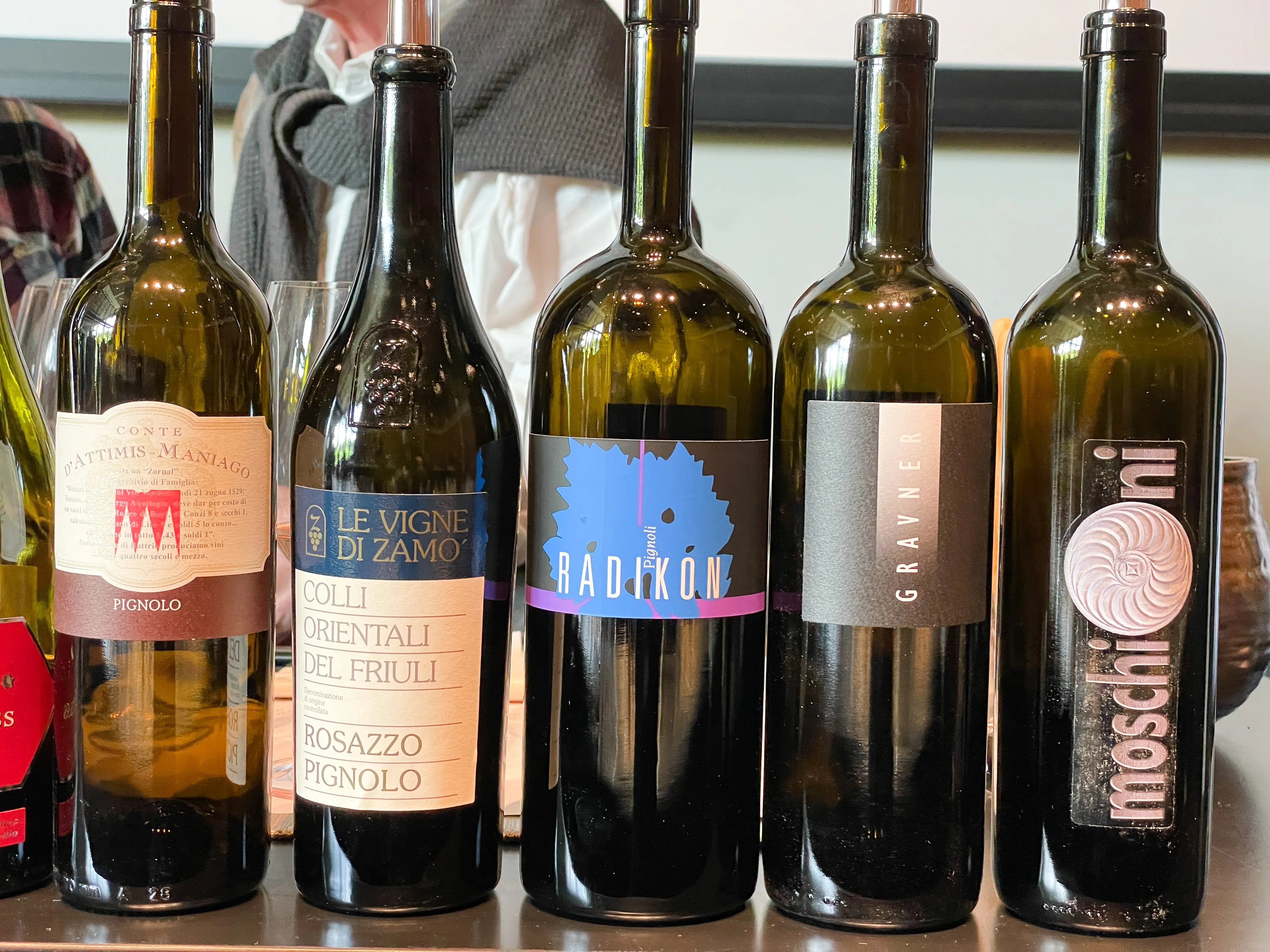
If you’re interested:

Ben Little – Pignolo: Cultivating the Invisible – The Native Grapes, 2021 – €35 (Kettle-stitched Softcover). Purchase a copy.

